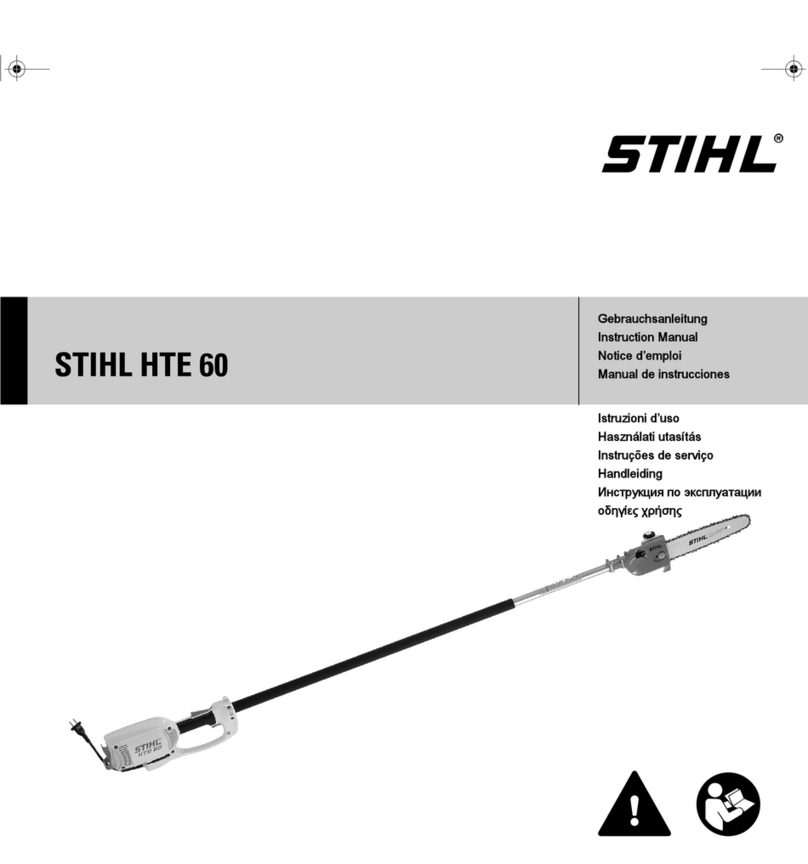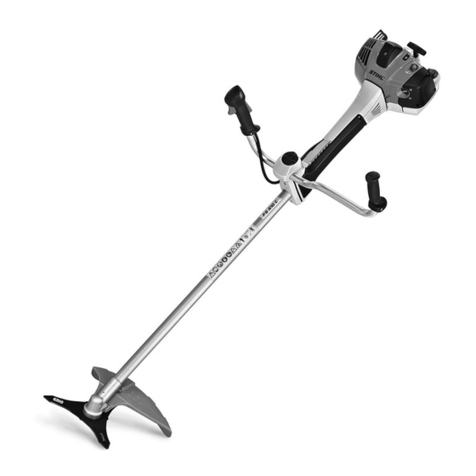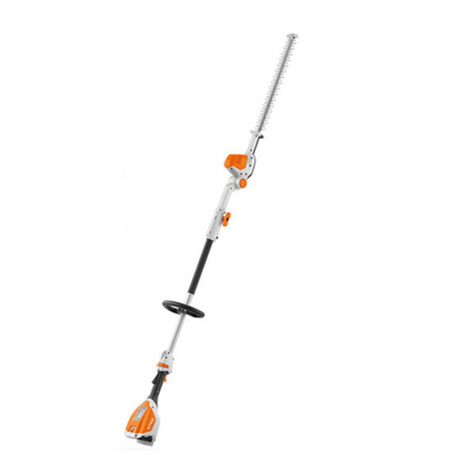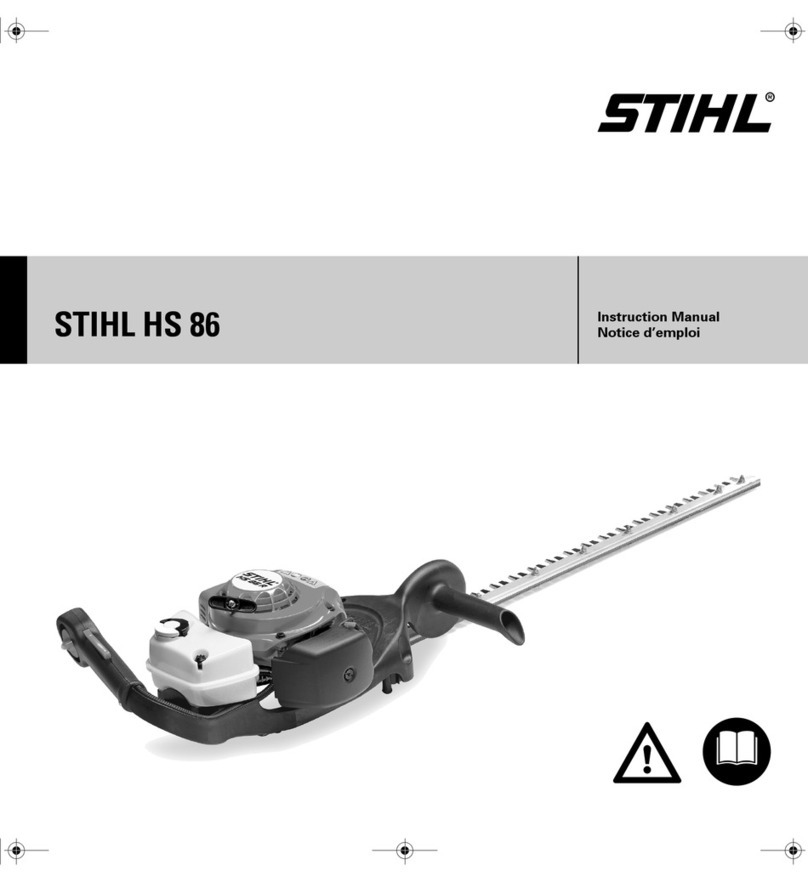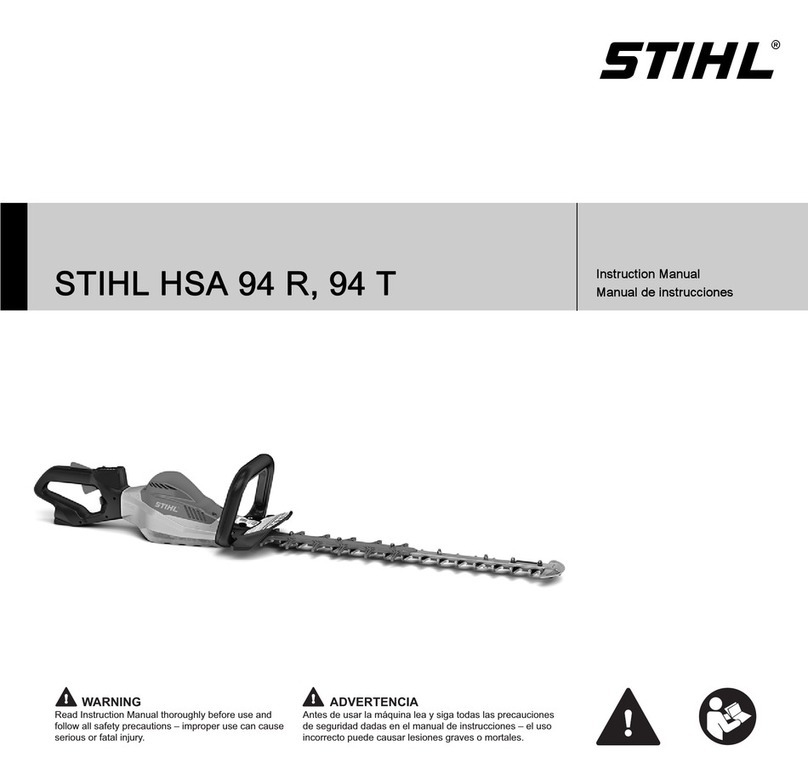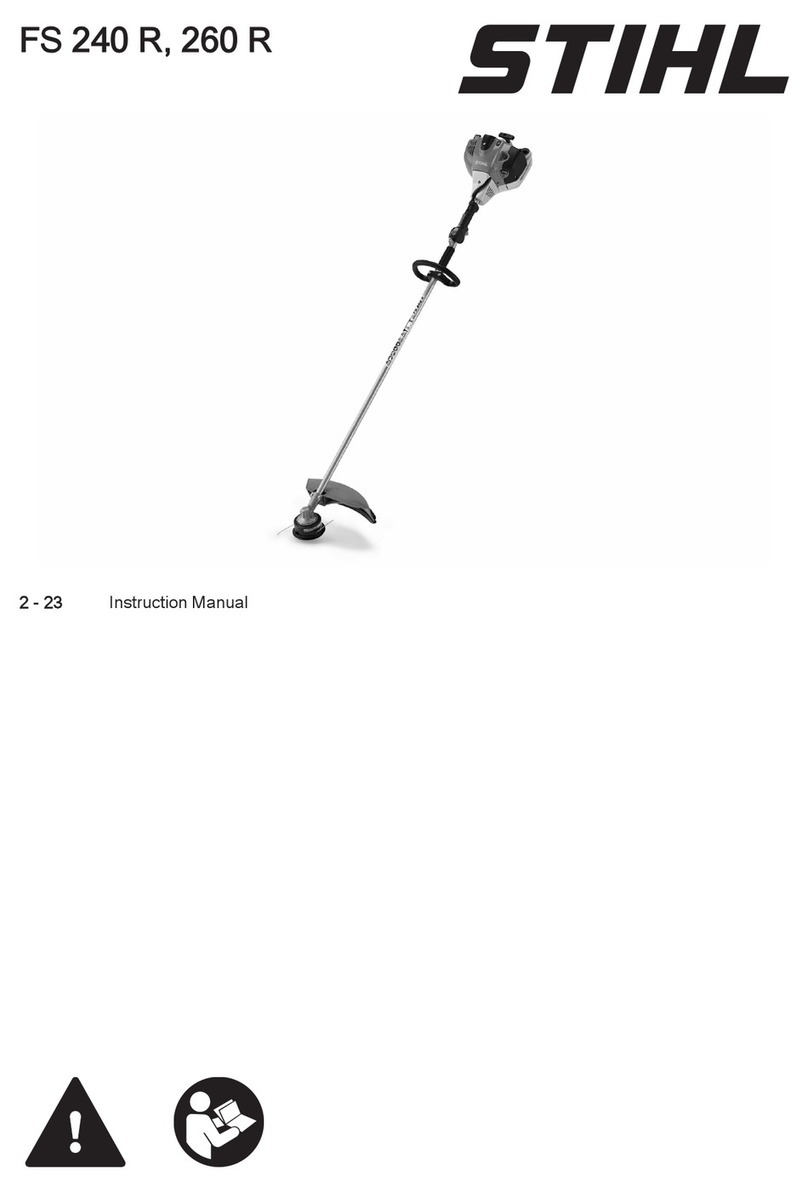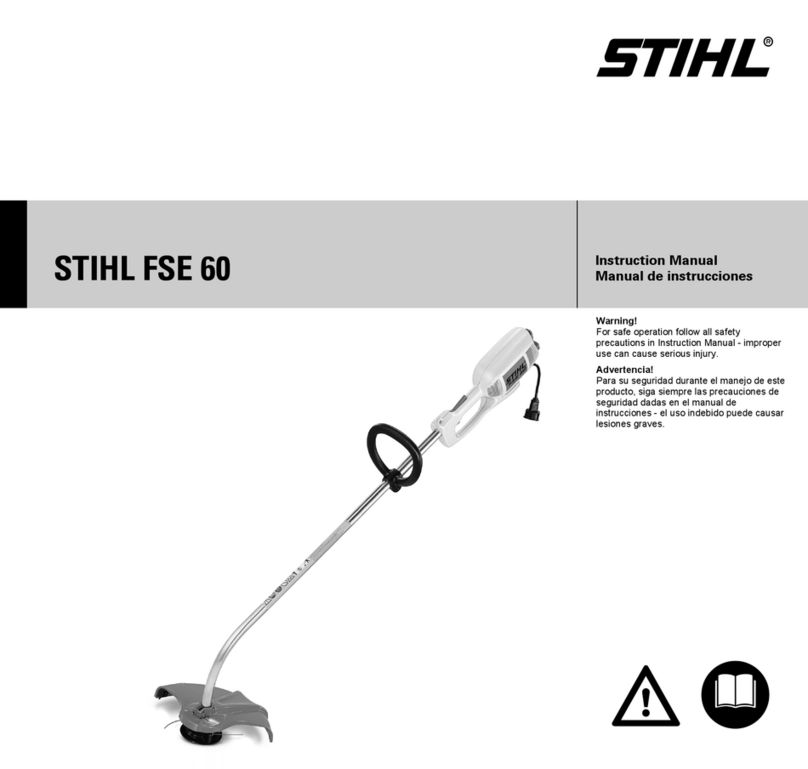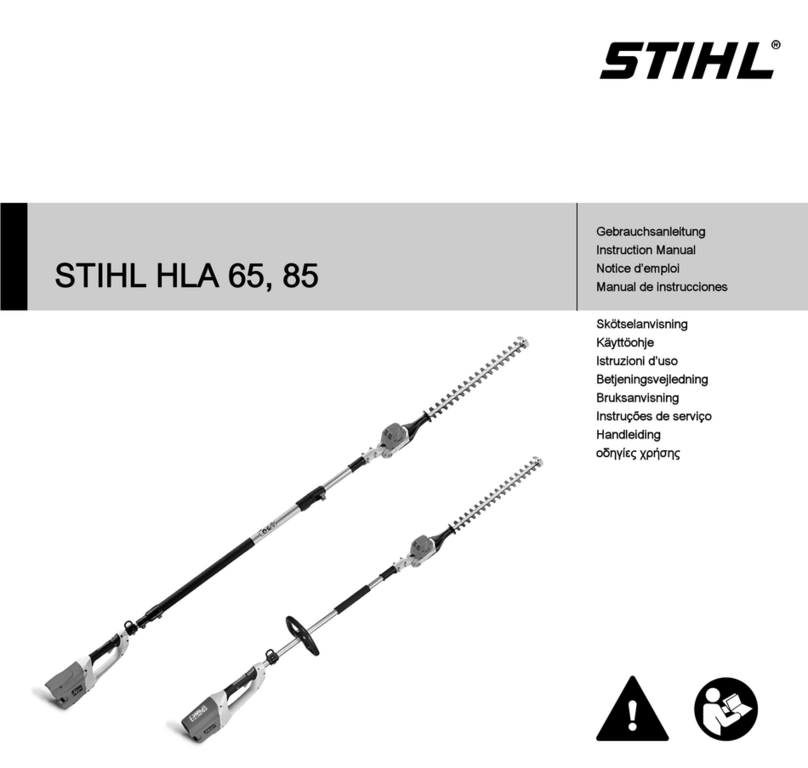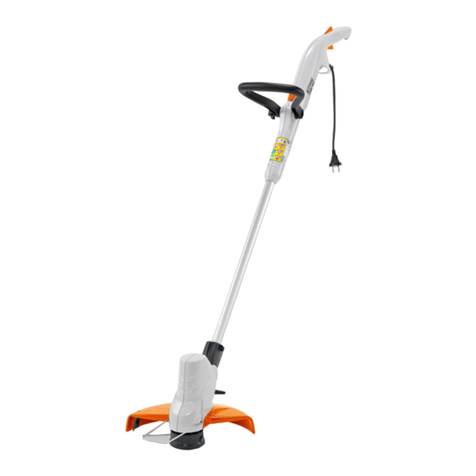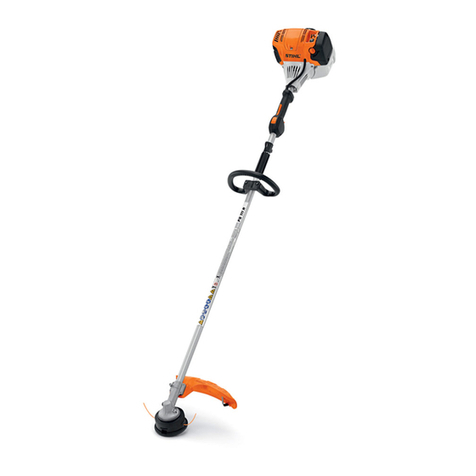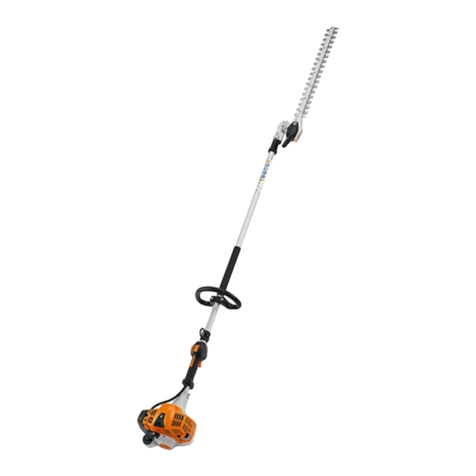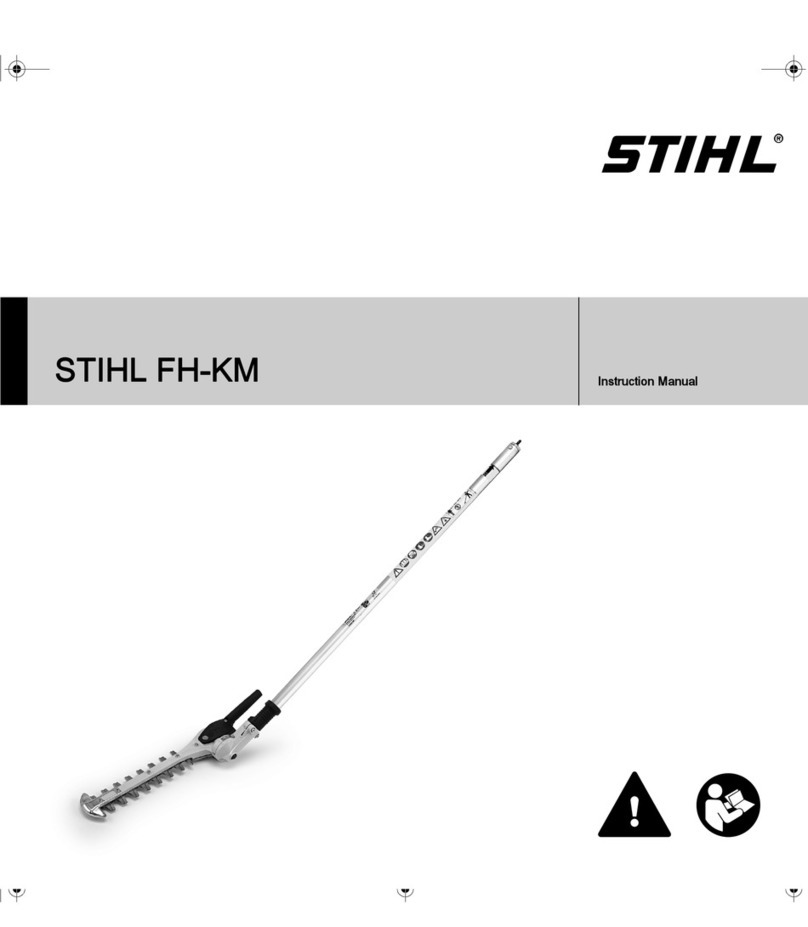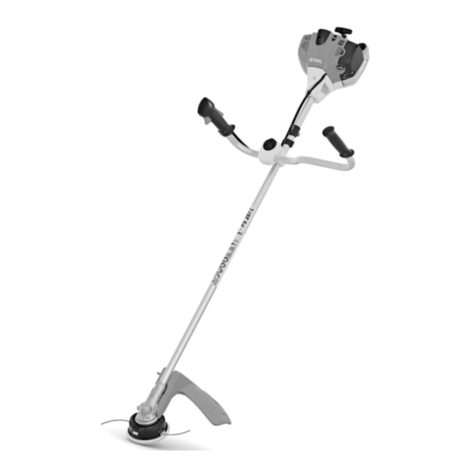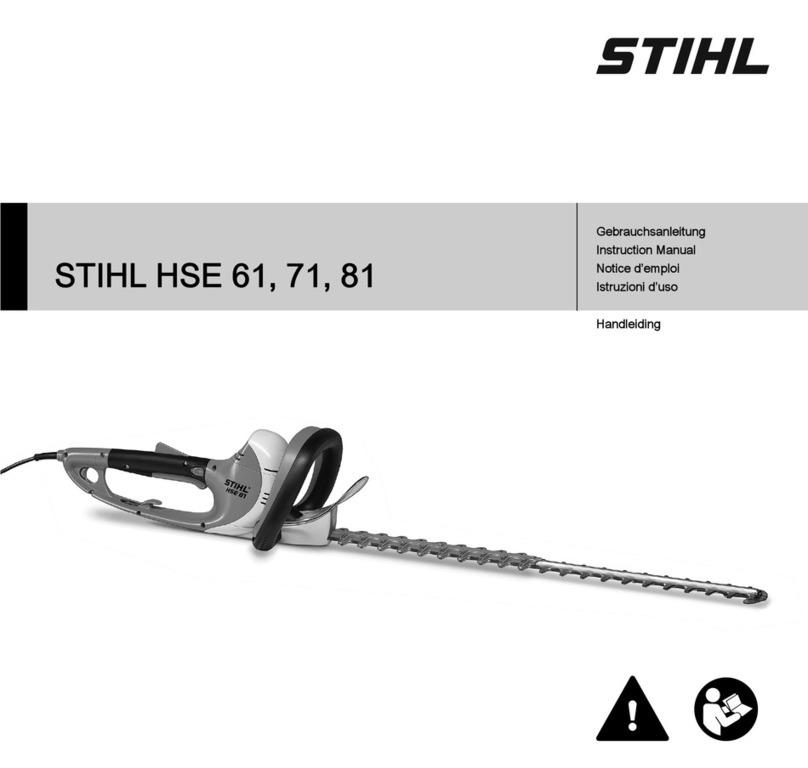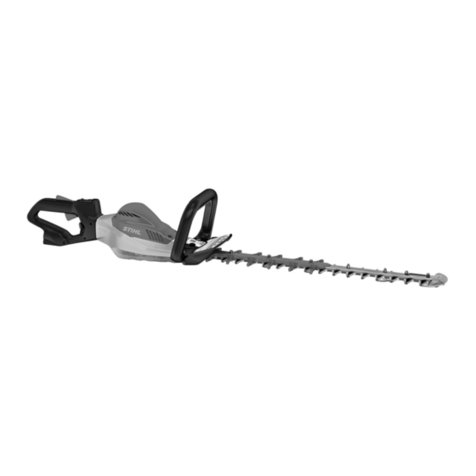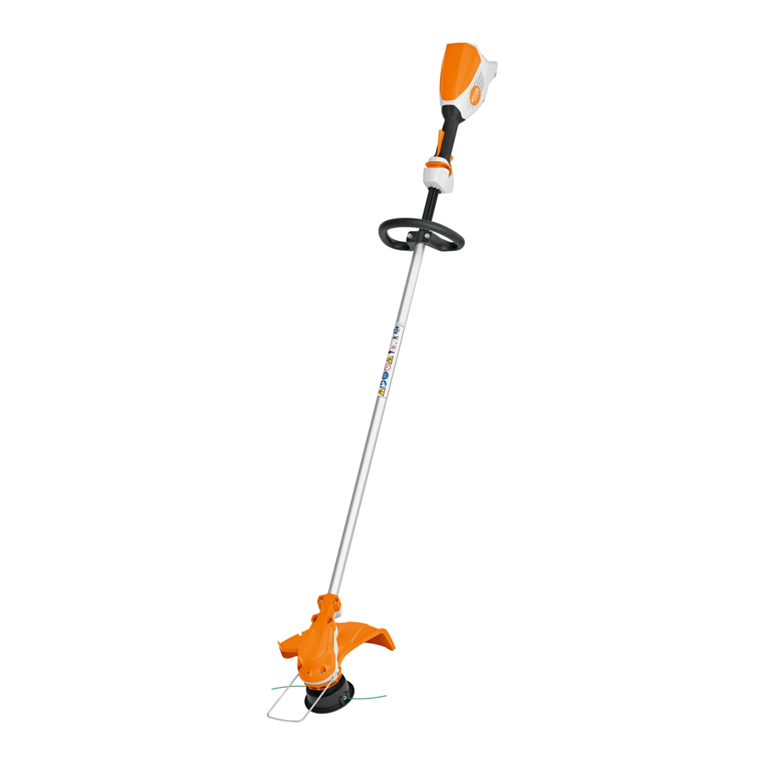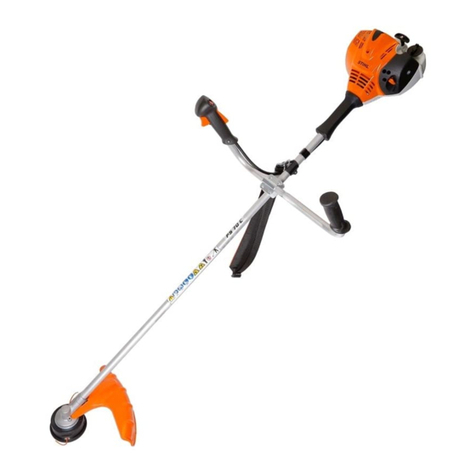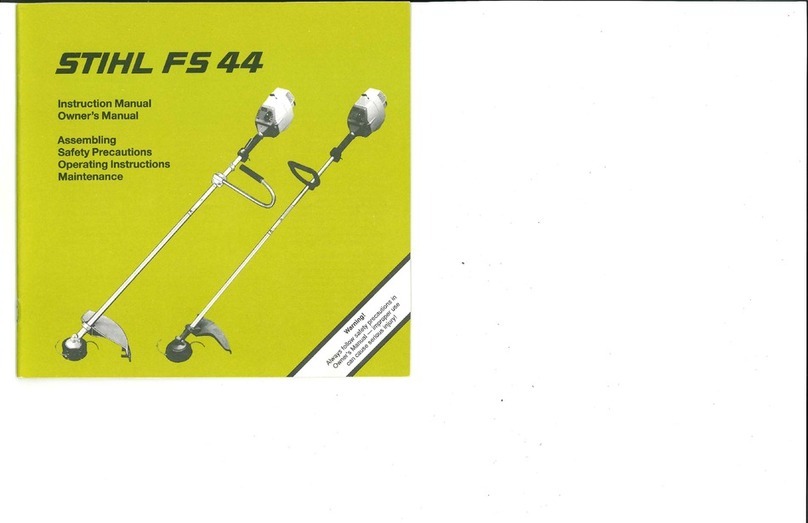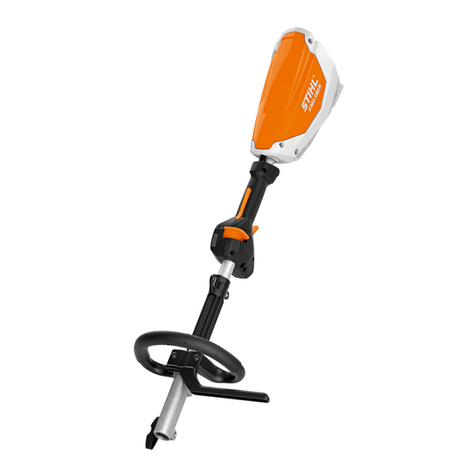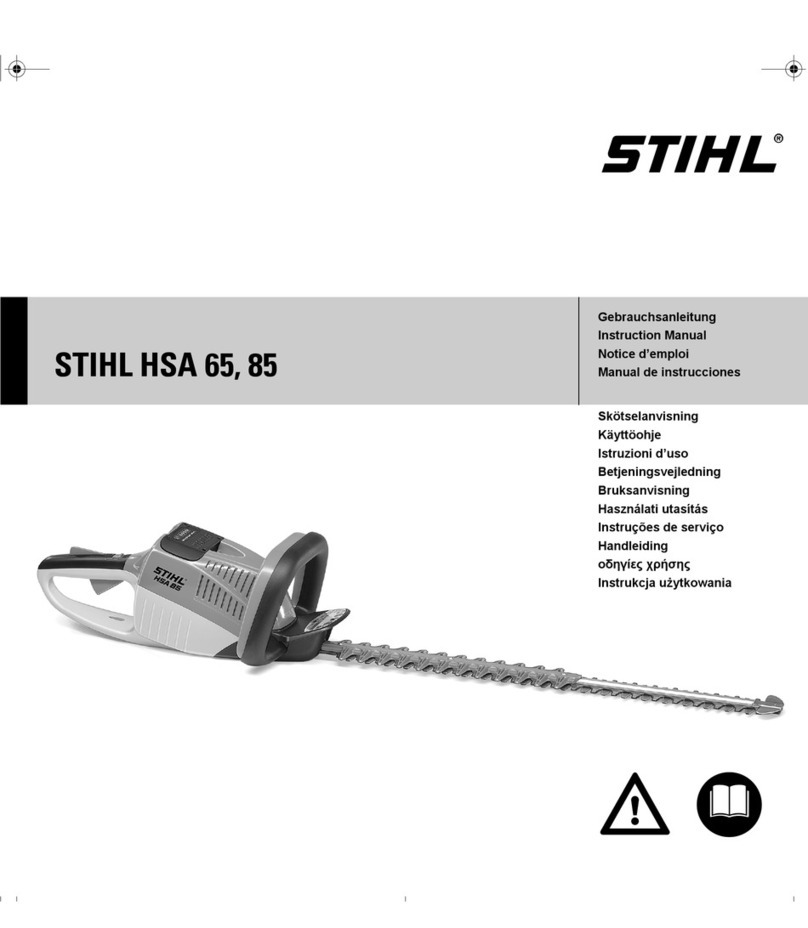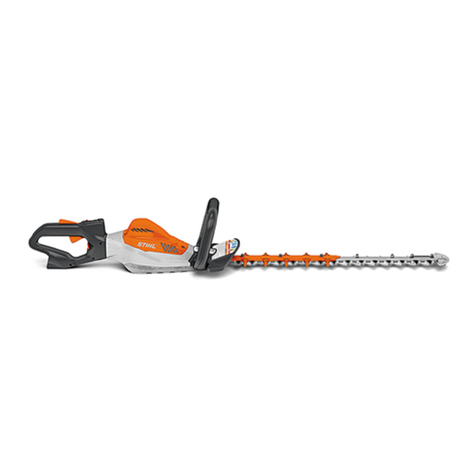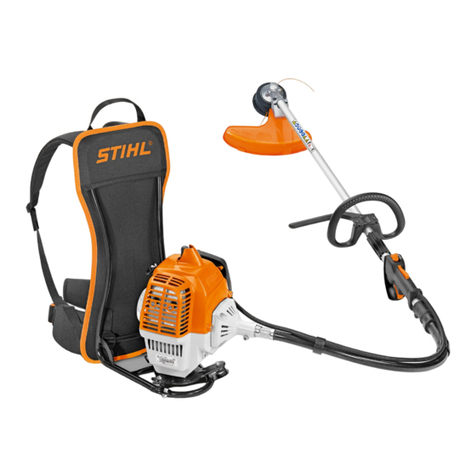HSE 61, HSE 71, HSE 81
English
5
Clear away fallen branches, scrub and
cuttings.
Watch out for obstacles: Roots, tree
stumps or holes which could cause you
to trip or stumble.
When working at heights:
–Always use a lift bucket
–Never work on a ladder or in a tree
–Never work on an insecure support
Be particularly alert and cautious when
wearing hearing protection because
your ability to hear warnings (shouts,
alarms, etc.) is restricted.
To reduce the risk of accidents, take a
break in good time to avoid tiredness or
exhaustion.
Work calmly and carefully – in daylight
conditions and only when visibility is
good. Stay alert so as not to endanger
others.
The gearbox becomes hot during
operation. To reduce the risk of burn
injury, do not touch the gear housing.
If your power tool is subjected to
unusually high loads for which it was not
designed (e.g. heavy impact or a fall),
always check that it is in good condition
before continuing work – see also
"Before Starting Work". Make sure the
safety devices are working properly. Do
not continue operating your power tool if
it is damaged. In case of doubt, have the
machine checked by your servicing
dealer.
Inspect the hedge and work area to
avoid damaging the cutting blades:
–Remove stones, rocks, pieces of
metal and other solid objects.
–When working close to the ground,
make sure that no sand, grit or
stones get between the blades.
–Take particular care when cutting
hedges next to or against wire
fences.
To avoid the risk of electrocution, do
not touch electric power lines – never cut
through electric power lines.
If the hedge is very dusty or dirty, spray
the blades with STIHL resin solvent from
time to time during cutting. This helps
reduce blade friction as well as the
aggressive effects of sap and the build-
up of dirt particles.
The dust that occurs during operation
may be harmful to health. If dust levels
are very high, wear a suitable respirator.
Never jerk the connecting cord to
disconnect it from the wall outlet. To
unplug, grasp the plug, not the cord.
Avoid damage to the power supply cord.
Do not drive over it, pinch or tug it.
Position the connecting and extension
cords correctly:
–Do not chafe on edges, pointed or
sharp objects
–Do not squeeze through gaps in
doors or windows
–If cords are twisted – unplug the
power tool and straighten them out
–Never touch the cutting attachment
–Always unwind the extension cord
completely from the cable drum to
reduce the risk of fire from
overheating.
Before leaving the power tool
unattended: Switch off the power tool
and unplug it from the power supply.
Check the cutting blades at regular short
intervals during operation or
immediately if there is a noticeable
change in cutting behavior:
–Switch off the motor, wait for the
cutting blades to come to a
standstill, disconnect plug from
power supply.
–Check condition and tightness, look
for cracks.
–Check sharpness.
Always switch off the power tool and
unplug it from the power supply before
replacing the cutting blades. This avoids
the risk of injury from the motor starting
unintentionally.
To reduce the risk of fire, always clean
plant residue, chips, leaves and excess
lubricant off the motor.
Do not touch the cutting
blades while the motor is
running. If the cutting
blades become jammed
by thick branches or
other obstructions, switch
off immediately and dis-
connect the plug from the
power supply before
attempting to free the
blades.
If the connecting cord is
damaged, immediately
disconnect the plug from
the power supply to avoid
the risk of
electrocution.
